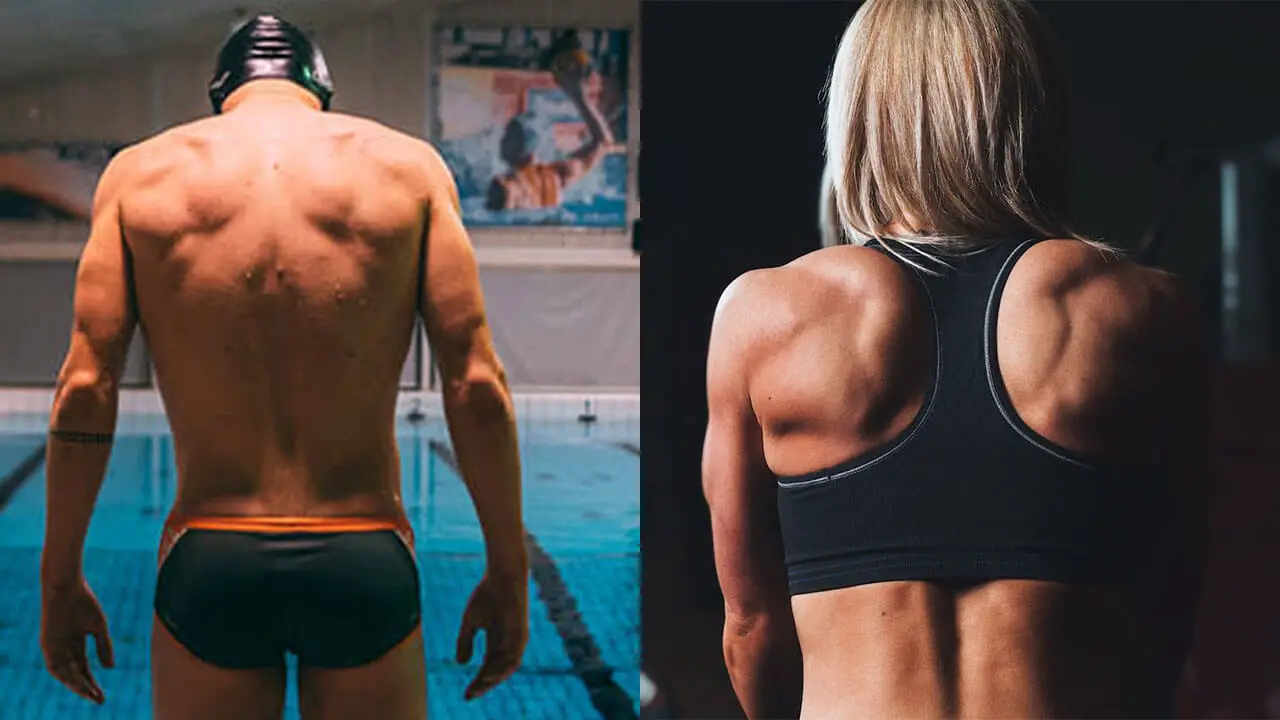Everyone knows that one of the best ways to get a great physique is to hit the gym. However, not everyone likes going to the gym; some want an alternative method to attain the physique of their dreams without pumping iron.
To that end, many have turned to swimming. One look at a competitive swimmer’s body and you’ll understand why: they are the definition of a “lean and mean” body that isn’t overly muscular and bulky. A swimmer’s body has very functional muscles that also look aesthetically pleasing.
That said, between having a swimmer’s body vs. a gym-goer’s body, which one is the optimal physique?
Swimmers tend to be less muscle bound and more athletic compared to the average gym-goer. Swimmers have more cardiovascular endurance, flexibility, lower body fat percentage, and fit into clothes more easily. A gym-goer’s body tends to be bulkier, with greater size and strength, however less importance is placed on muscle function and health. Many gym-goer bodies look great but are not necessarily healthy or fit unless you specifically take steps to address these potential issues.
In this article, we’ll cover the characteristics of each body type, including the benefits and drawbacks, and end off with some tips to help you achieve your desired body composition.
Swimmer body vs gym body at a glance
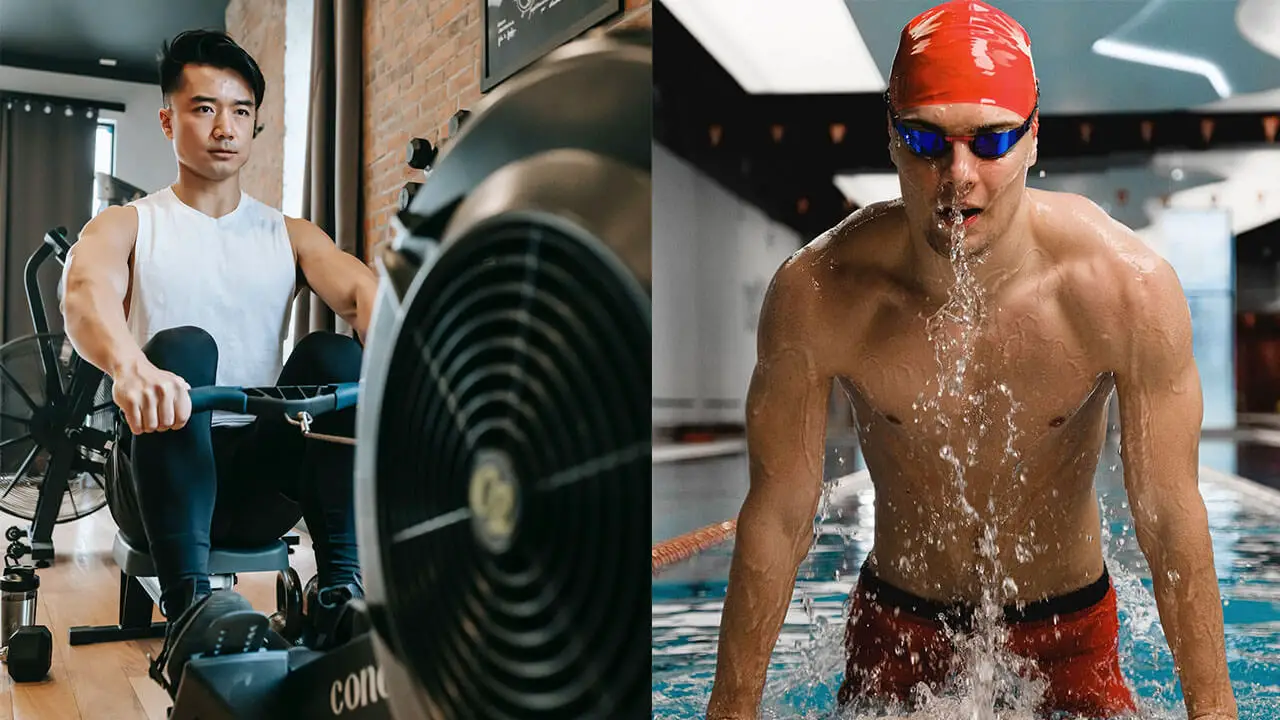
Body fat percentage: Both swimmers and gym-goers can have a low body fat percentage. That said, unless the gym-goer happens to be a competition-ready bodybuilder or photoshoot-ready fitness model, chances are the average swimmer has a lower body fat percentage owing to the amount of calories burned while swimming.
Muscle definition and size: Gym-goers often focus on building the greatest amount of muscle mass and definition, especially in the “show muscles” like the chest, shoulders, biceps, and abs. Swimmers also go to the gym to train, however size is not their goal; they want the strength to perform the most powerful strokes and kicks possible without becoming musclebound.
Flexibility: Swimmers tend to be more flexible than gym-goers since swimming requires a wide range of motion in the joints. The difference in flexibility is compounded further by the fact that gym-goers want to be as big and bulky as possible, sometimes to their detriment. Have you ever seen a bodybuilder try to scratch their back?
Cardiovascular endurance: Between the two, swimmers tend to be more physically fit. Swimming is an aerobic exercise that requires great cardiovascular endurance. Many gym-goers prioritize lifting heavy weights, and some even shun doing any sort of cardio at all for fear that it will “kill their gains’.
Show muscles vs. functional muscle: A gym body looks impressive, but rarely does it perform as well as it looks. Many bodybuilding enthusiasts focus too much on looking good, and less on how functional their physique is. As mentioned, many bodybuilders lack flexibility, and bigger bodybuilders cannot even do a pull-up or run properly because they have so much muscle mass. If all you care about is aesthetics, then having a gym body is great. If functionality is part of the criteria, then swimmers arguably look pretty good and also have a functional body.
What is a swimmer’s body?
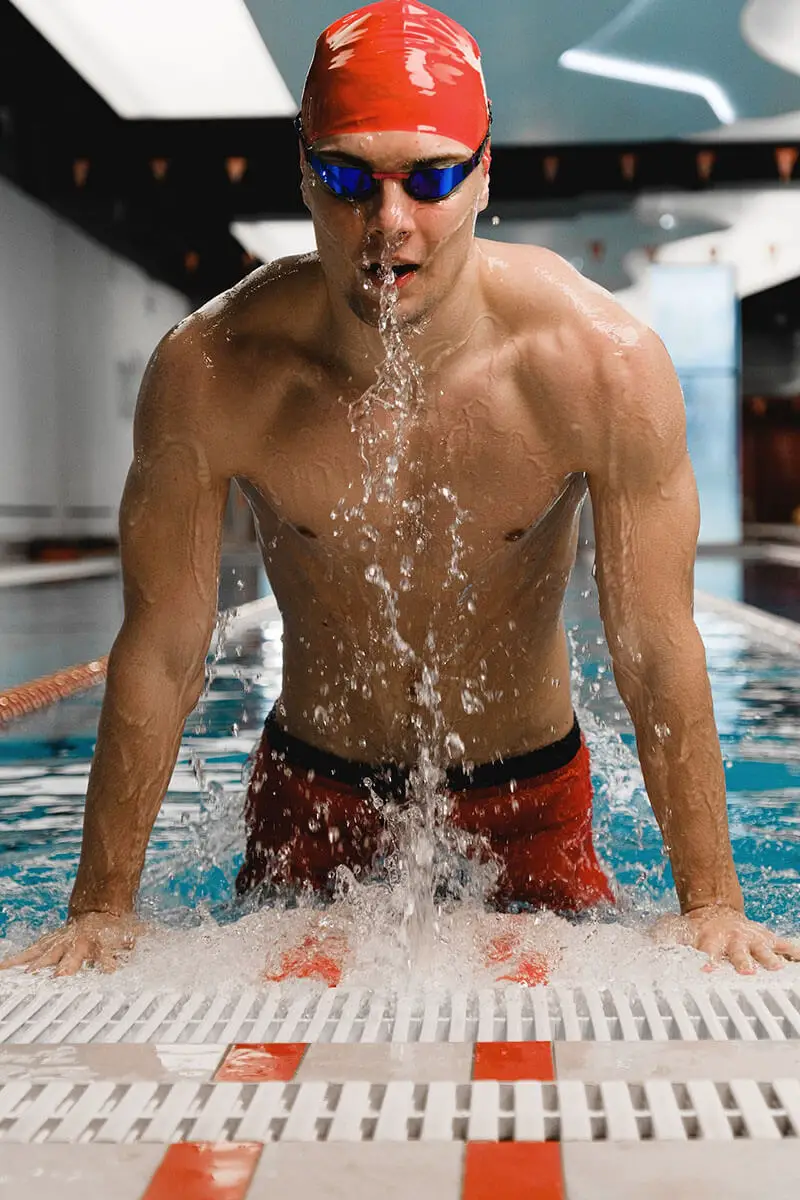
A swimmer’s body is a physique that is similar to what a high-level swimmer might have.
It is usually characterized by being long and lanky, with impressive back, shoulder, and tricep muscles, a lean and slightly muscular physique, typically with abdominal muscles visible.
With regards to their back muscles, they typically have what is called a “V-taper” in bodybuilding parlance. That is to say, a V-shaped back where it is wider at the top where the latissimus dorsi muscles are, tapering down to a narrow waist and hips.
Broad, muscular shoulders are another staple in a swimmer’s body. Swimmers need powerful shoulder muscles to help generate enough force with each stroke.
When people refer to having a “toned” body, something akin to a swimmer’s body might come to mind.
Height is a major advantage for swimmers, so people who find that they naturally excel in swimming tend to be tall, and thus swimmers are generally taller than the average population.
Benefits of a swimmer’s body
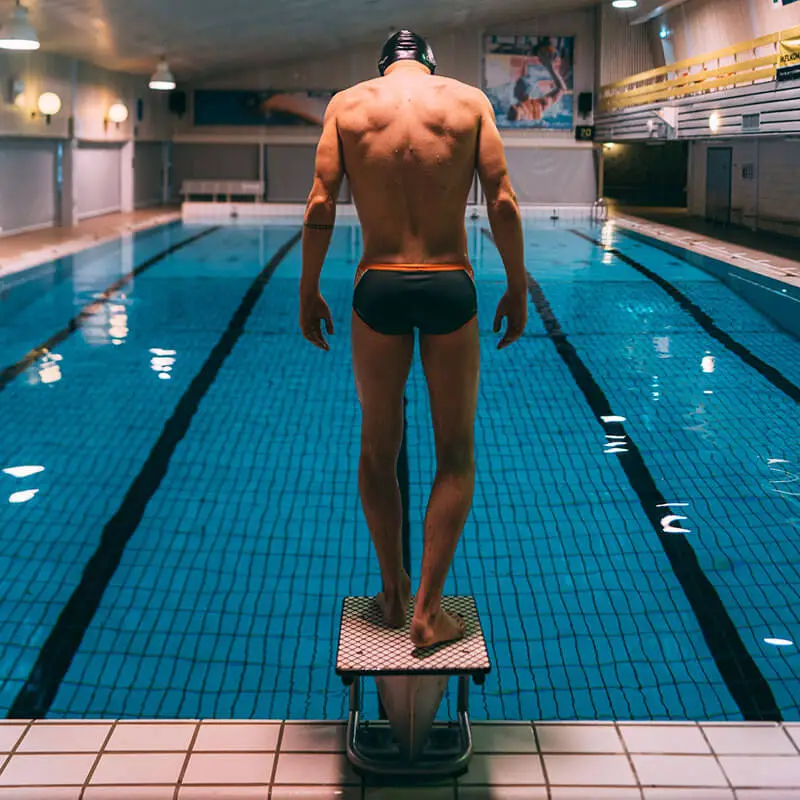
Swimming is an aerobic exercise that trains one’s cardiovascular system and endurance more than strength. Like in many sports, swimmers often supplement weight training into their workouts to build a foundation of muscle so they can perform stronger strokes and kicks.
Therefore, swimmers often are muscular but also have lower body fat percentage and improved overall health thanks to all of the aerobic training that they do.
This leads to an overall reduced risk of chronic diseases such as heart disease, diabetes, and certain types of cancer. It also results in better heat health, increased energy levels, and greater athletic performance.
Their focus on having a streamlined shape means that they don’t want to get too big. Too much muscle mass can increase drag in the water and cause them to tire faster. Too much muscle also restricts their movement which can affect their stroke and kick efficiency. As such, swimmers stay lean and flexible so as not to slow themselves down in the water.
One can describe a swimmer’s body as toned. They aren’t too big but have more muscle than the average person. They don’t have issues with fitting into most clothing and look good both with clothes on and without.
Since swimmers also do weightlifting, they are basically just smaller versions of a gym enthusiast, and typically taller and leaner too.
Drawbacks of a swimmer’s body
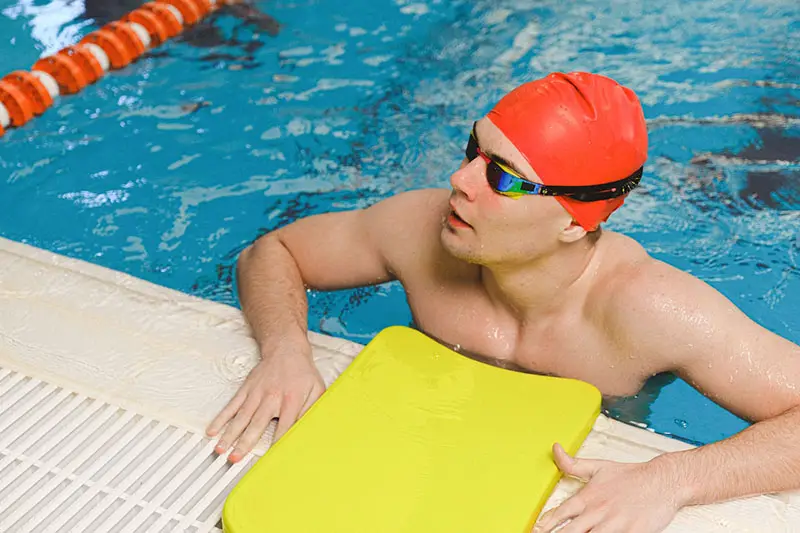 Some downsides of a swimmer’s body is a disproportionately larger upper body relative to their lower body, and possible overuse injuries or imbalances in their shoulders due to the repetitive nature of their sport.
Some downsides of a swimmer’s body is a disproportionately larger upper body relative to their lower body, and possible overuse injuries or imbalances in their shoulders due to the repetitive nature of their sport.
Swimmers can be described as “top-heavy” since so much stroke power is generated by the muscles in their upper body, such as lats, shoulders, and triceps.
That’s not to say they don’t focus on their legs, but they want strong legs that are not too bulky which can impede with their kicks. They have a higher likelihood of looking like they have chicken legs relative to their torso.
Due to how many calories they burn while swimming, some swimmers can end up shedding too much fat. For women this is a detriment, as having a healthy amount of fat is necessary for normal reproductive health.
Tips for achieving a swimmer’s body
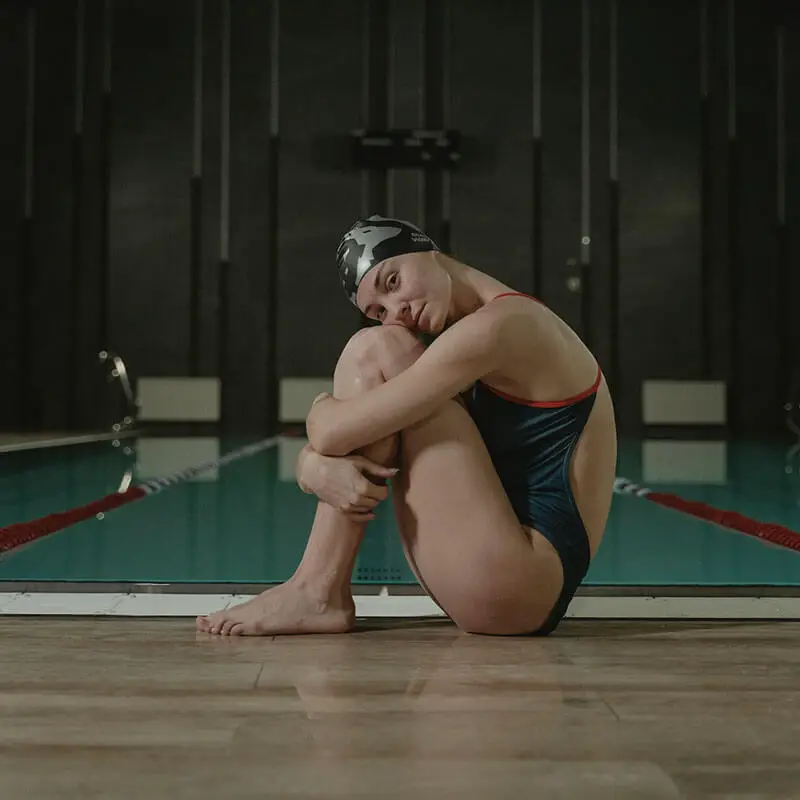
Does having a swimmer’s body sound appealing to you? Then here are some quick tips to help you get started.
First and most obviously, start incorporating swimming into your regular exercise regimen. Try starting out by swimming laps for 30 minute sessions, 2-3 times a week. Gradually increase the intensity and duration of your swimming sessions as you improve.
Next, incorporate resistance training (i.e. weightlifting) exercises that target the muscles used in swimming, such as your shoulders, back, and core. Don’t neglect your legs either. Pull ups, lat pulldowns, overhead press, tricep extensions, squats, and deadlifts are exercises you can’t go wrong with. For a more comprehensive workout for swimmers, check out this guide.
Diet is a major part of any exercise regimen, and swimmer’s workouts are no exception. Try to follow a balanced, nutritious diet that is high in protein. Keep processed foods and fast food to a minimum, as they are usually calorically dense and easy to eat a surplus of calories, resulting in fat gain.
Lastly, be mindful of overuse injuries. Pay close attention to how your body feels. Any pain or discomfort, particularly in your shoulders, should not be ignored. Incorporate rest days into your routine and consider splitting your swimming and gym sessions to separate days if you find that you are having trouble recovering. I recommend having at least two to three rest days in a week.
If you are very serious about achieving a swimmer’s body, I highly recommend hiring a qualified coach or trainer to keep you on the right track.
What is a gym body?
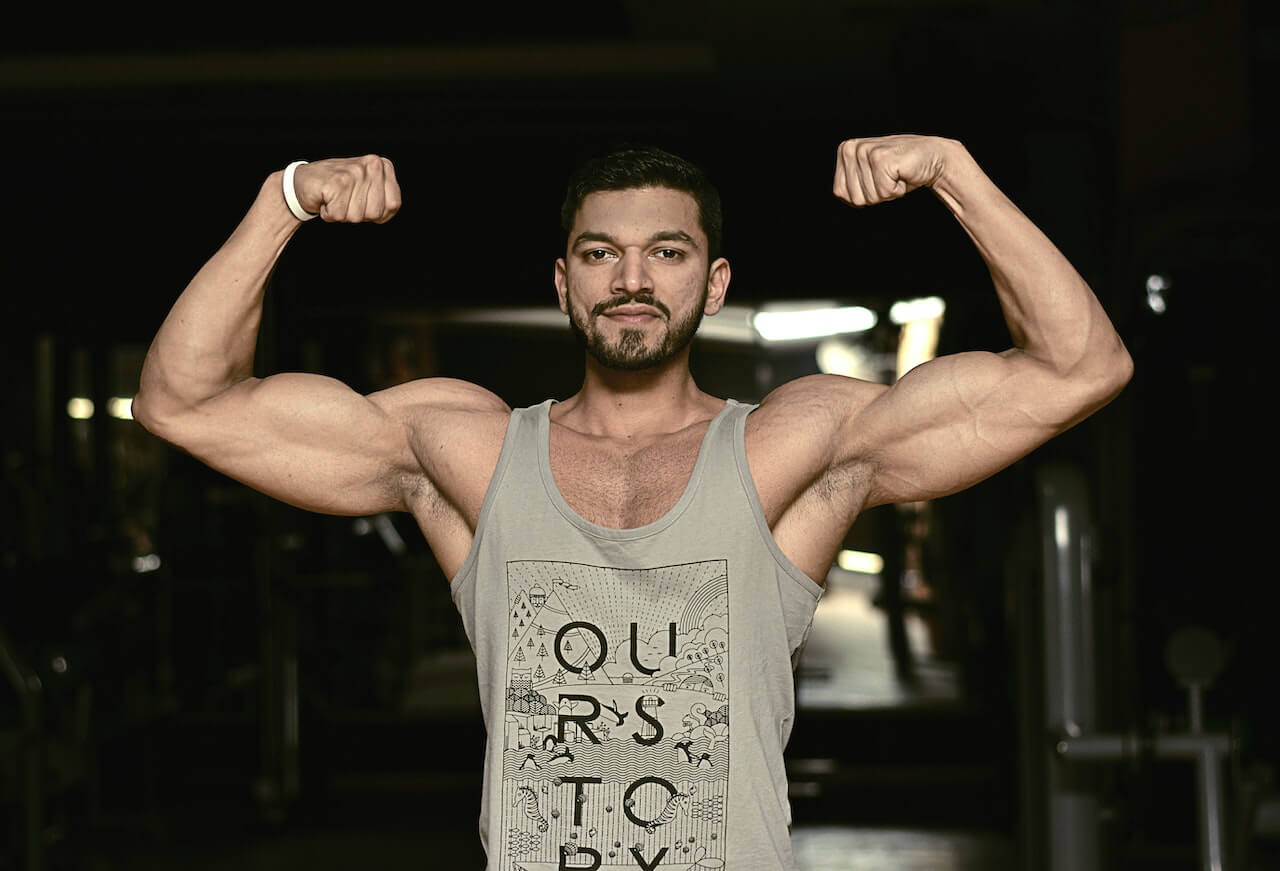
A gym body is what you see on the cover of fitness magazines but a bit smaller and less lean, considering most gym-goers don’t make a career out of their physiques and aren’t taking steroids.
Someone with a gym body has above average muscle mass, even more than a swimmer. Depending on the person, they can be muscular all-around or only focused on the “show muscles” like the chest, shoulders, arms, and abs (or legs for women) while neglecting other body parts.
There is a lot of overlap between a gym body and a swimmer’s body. A gym body will also have broad shoulders, a “V-taper” back, strong biceps and triceps, visible abdominals, and large pectoral (chest) muscles. For women, more emphasis is placed on having large and round glutes.
Experienced gym-goers or people who make a career out of bodybuilding will train every single body part so that they have a balanced, proportional look without any obvious weaknesses.
Cardio is sometimes seen as a detriment to someone chasing after the gym body because it can burn calories that may be necessary for muscle growth. Many also fear cardio can affect their recovery period between workouts which can cause them to overtrain (it won’t happen unless you’re doing HIIT).
Since there is so much misinformation about how cardio can negatively impact one’s muscle growth, some people don’t do it and instead rely entirely on dieting to shed the pounds.
Gym-goers who do not do cardio unsurprisingly are not fit, have terrible endurance, and are at risk of all the same heart diseases that sedentary people are at risk of. But man, they can look really good despite how unhealthy some of them are.
Benefits of a gym body
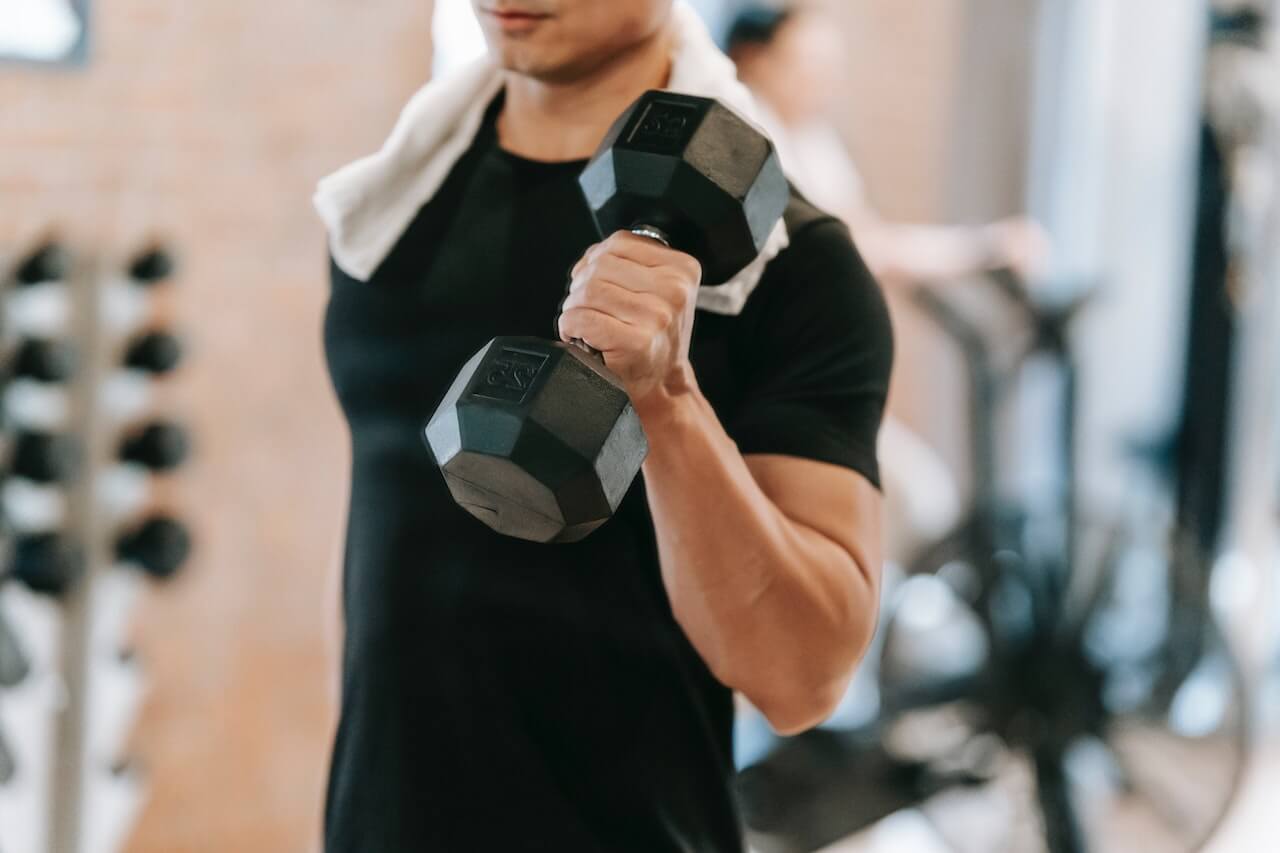
There are lots of benefits to having a gym body. People who have undergone dramatic transformations have found that enhancing their physical appearance has boosted their self-esteem, helped them command more respect from their peers, and improved their athletic performance in certain activities.
For example, in their daily life, they find that they no longer struggle to carry multiple bags of groceries, can easily lift boxes and furniture around, can lift up their kids easily, and so on.
Their greater muscle mass and definition has improved others’ perception of them, most notably their partner’s, and they find that in social settings whenever they speak, others listen where previously they were ignored or talked over.
Some additional benefits of having a muscular gym body are their drastically improved bone density. Those who weightlift are less likely to suffer bone fractures or breaks, and are less likely to develop osteoporosis.
Furthermore, resistance training can boost metabolism and aid in weight management, though it cannot overcome a bad diet.
Drawbacks of a gym body
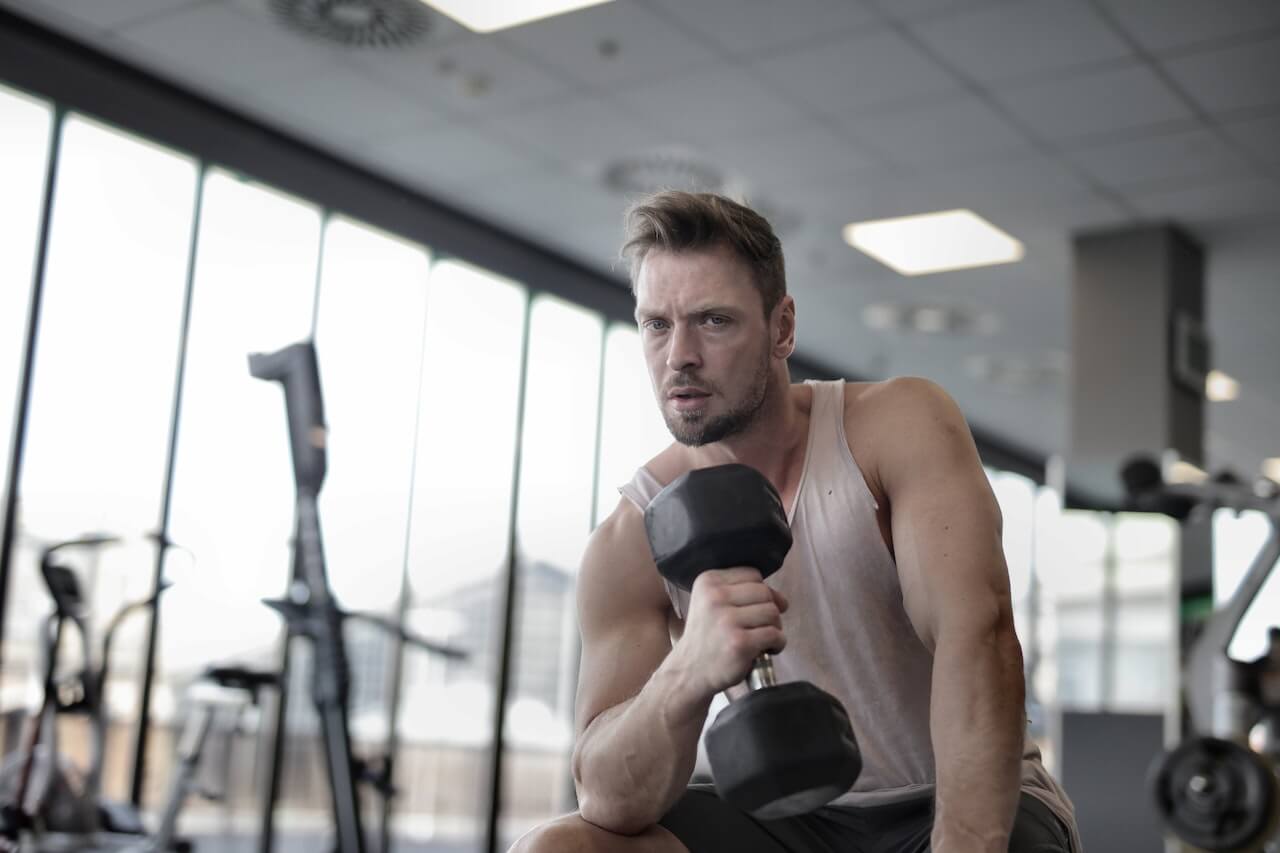
Many of the downsides of having a gym body comes from users not having an understanding of how to diet and train properly.
To illustrate my point, consider a gym-goer who prioritizes certain muscle groups over others for training (legs are often neglected, and upper body tends to be emphasized), does not do any cardio, and instead relies entirely on eating a restrictive diet to lose weight.
This individual can over-train certain muscle groups, cause a muscular imbalance that negatively impacts their posture, or end up injuring themselves, sometimes permanently.
By not doing cardio (i.e. running, cycling, swimming), he will not truly be fit and will be at increased risk of heart disease just like a sedentary person who doesn’t even exercise.
By prioritizing aesthetics over overall health, one can fall into the trap of looking like they are in their best shape ever when the truth is far from reality.
Thankfully, you can have your cake and eat it too (literally) if you train your muscles equally, do some aerobic training from time to time, and portion your meals so that you can occasionally eat your guilty pleasure foods in moderation.
Tips for achieving a gym body
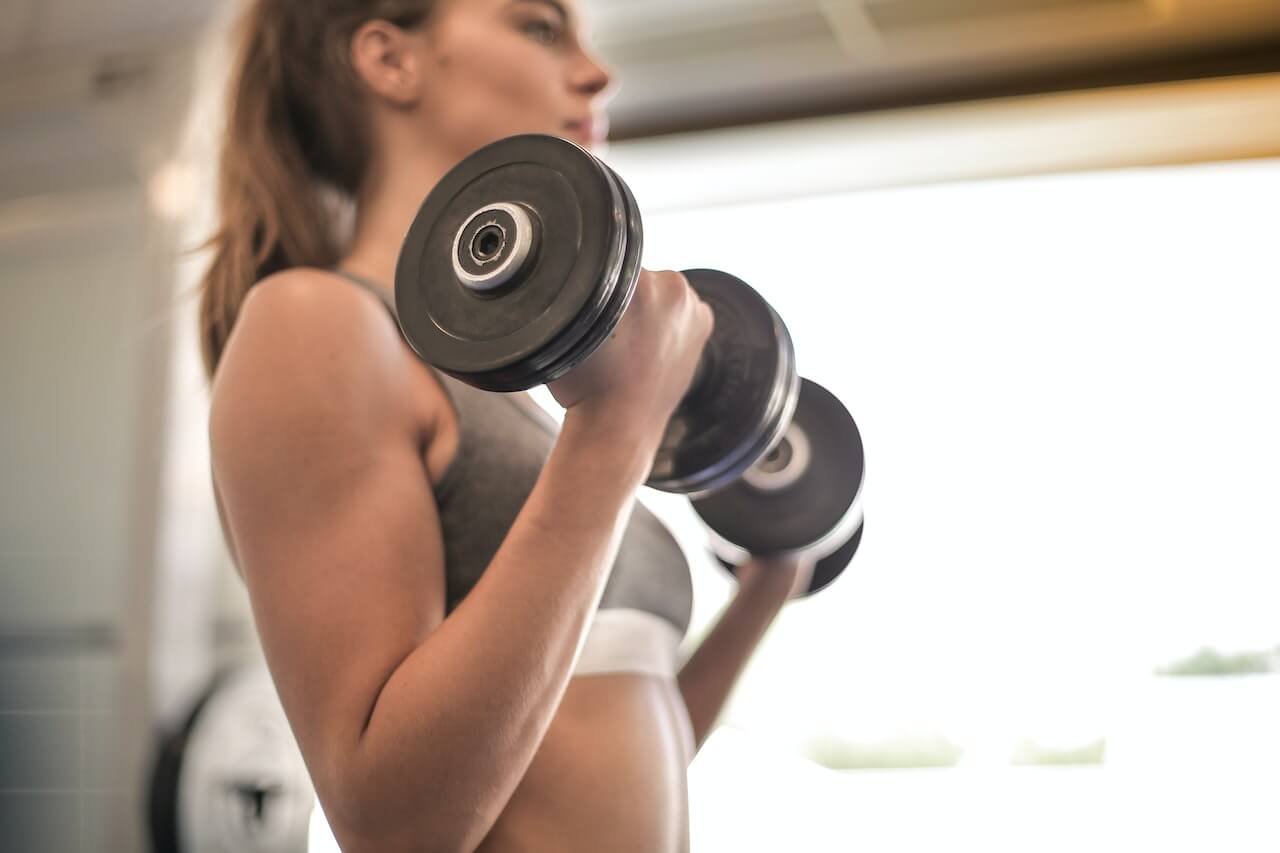
With all that in mind, here is how you can get started getting a gym body if you prefer this over a swimmer’s body. Note that I can only give you brief guidance, as an entire website’s worth of content can be written about this topic.
First and most obviously once again, start a resistance training regimen and incorporate cardiovascular exercise into your routine.
There are plenty of workouts that you can find online that fit a variety of needs. Do you prefer working out two times a week? How about three, four, or five? How about splitting between upper and lower body workouts, or doing full body workouts each time? A very solid 3-day workout plan can be found here.
I recommend looking specifically for workouts focused on hypertrophy (muscle building) rather than strength training workouts. This is characterized by rep ranges above 6-8 per set, and typically 5 reps or fewer per set is more strength focused.
Do cardio either at the end of your workout or on the days where you aren’t weightlifting. You can do some light cardio for a few minutes just to warm up, but doing cardio first will negatively impact your weightlifting performance.
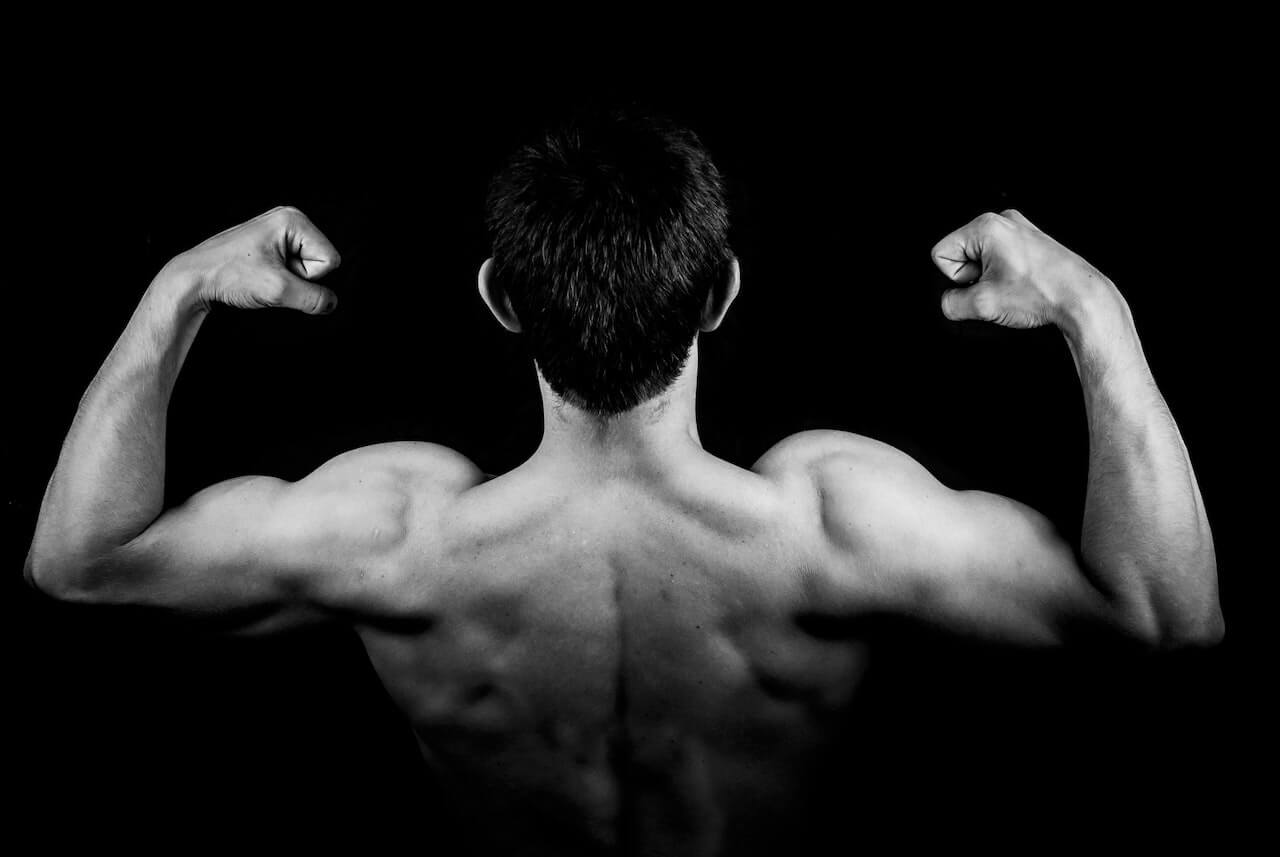
Next, any workout plan worth its salt will tend to focus on compound exercises (exercises that train multiple muscles at once). For example, a bench press trains not only your chest, but your shoulders, triceps, lats, and even your core.
Conversely, an isolation exercise such as a bicep curl trains only your biceps. You can instead do a chin up which trains both lats and biceps to maximize your time in the gym. Isolation exercises have their place, but prioritize compound exercises. The workout guide you’re following will likely place isolation exercises at the end of the workout or make them optional.
Some examples of compound exercises are overhead press, squats, deadlifts, bench press, pull ups/chin ups, leg press, and face pulls.
Gradually increase the weight and intensity of your workouts over time to avoid injury. Again, a solid workout plan will tell you how much to increase the weights, reps, sets, and so on for each workout.
Follow a diet plan that is high in protein and try to avoid processed foods and fast foods. I recommend you look at a sample diet plan to see what kinds of foods bodybuilders eat (hint: lots of chicken breast, egg whites, and protein shakes).
Lastly, be patient with your training and diet. Achieving a gym body requires time and dedication. If you feel like you lack these things, consider hiring a coach to point you in the right direction.
Get the best of both worlds
Why choose between having a swimmer’s body or gym body when you can have both?
If you haven’t made the connection yet, swimmers also go to the gym to train to improve their swimming performance. They technically have a gym body, albeit on the smaller side.
If your goal is to have a gym body, why not incorporate swimming as your choice of cardiovascular exercise to stay physically fit? If you workout at a recreation center with a swimming pool, you can do a gym workout and then go swimming afterwards.
These activities are not at odds with one another. As a swimmer, you can go to the gym to get stronger; as a gym-goer, you can swim to stay lean and train your cardiovascular system. This way, you can have the best of both worlds. Now that’s having your cake and eating it too.

